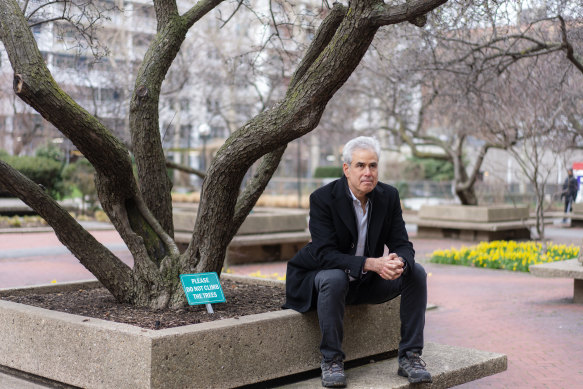
I get why. We see kids, glued to screens, for hours on end. We see them distracted. Inattentive. Something about it feels wrong. Why aren’t they playing outside, where surely no harm can befall them?
We’ve been primed to be scared of new technology. We can see this, over and again. This same techno-panic happened with Walkmans, computers and video games … even telephones – you know, the things that plug into a wall?

Jonathan Haidt’s book The Anxious Generation has created a sense of moral panic about digital technologies.Credit: New York Times
Which is why the ease with which the government has abandoned science and evidence on this issue is so concerning. It’s why it’s so galling to see Australian scientists celebrated one day and invisible the next. Fear and story are powerful things; Haidt wields them to perfection, eschewing hard science for digestible, simple messaging. And it works.
We have to get better at telling the stories of scientists. Because, you might not believe it, there’s a parallel universe where this conversation never occurred.
On basically the same day The Anxious Generation was released, another book hit the shelves. It was written by Bath Spa University psychologist Pete Etchells, and it had a title that does not inspire fear or panic: Unlocked: The Real Science of Screen Time (and how to spend it better).
Loading
It’s balanced. Nuanced. It explains that the scientific literature on digital technologies and young people is messy and uncertain, and how the problem of screen time, social media and our connection to devices is complicated. Those advocating for bans, like SA Premier Peter Malinauskas, suggest there’s “a growing body of peer-reviewed research that tells us it is doing children harm”. That is, sadly, ignoring a lot of peer-reviewed literature that says differently, as Etchells points out.
Yes, there are problems, but there are also solutions. However, they’re not quick fixes like social media age limits.
And in that universe, we listened to what many scientists and digital media researchers are saying. They’re not saying big tech companies are innocent, or that their apps are designed flawlessly. Like parents and educators, they’re concerned about the ways children navigate the digital environment.
They’re hoping for smart, evidence-based regulatory interventions and protection for children against abuse and exploitation. Some even back the idea of strengthening age verification, though only in conjunction with investment in age-appropriate digital spaces, co-designed with young people, and digital media literacy programs.
When I left the ritzy feast a few weeks ago, I stood in the chill Canberra air waiting for my Uber. The tux, by then, was looking a little dishevelled. Of course, I pulled out my phone. And I still felt uncomfortable.
Jackson Ryan is a freelance science journalist and president of the Science Journalists Association of Australia.









 Add Category
Add Category